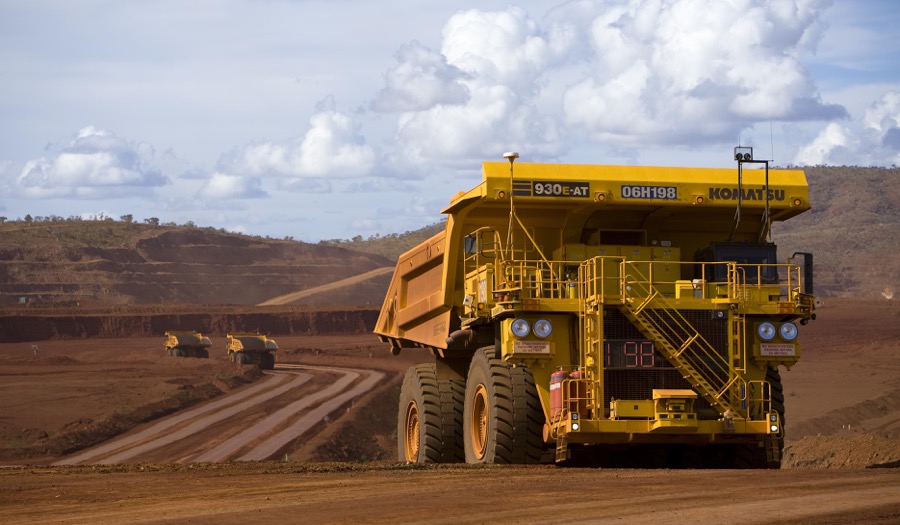
Autonomous industrial vehicles are already 15% cheaper to operate than conventional equipment. Growing public expectations in the area of industrial safety is yet another voice in favour of introducing automation and robotisation. People are being removed from risk zones altogether and robotised machines controlled by remote operators are taking on the most complex tasks.
There is another side to the story, however. As far back as 2013, researchers in the United States predicted that within 10-20 years 47% of jobs in the US would be replaced by machines due to automation and robotisation. The numbers produced by research in other countries vary, but are always significant.
Why does the mining industry need automation?
Just 15 years ago, mining was one of the most dangerous professions in the world, taking the lives of up to 15,000 people every year. Although just 1% of the population was employed in the industry, it accounted for 5% of all industrial accidents. Fortunately, modern technology has not only made it more comfortable to operate industrial machines but has also made it safe. Perhaps the most vivid example of how robots are saving miners’ lives is the Kibali mine in Congo, where automation has reduced by one third the number of industrial injuries.
Robotised dump trucks with satellite positioning and 360-degree scanning systems to prevent dangerous situations are already operating in the extractive industry more efficiently than conventional trucks with drivers.
Unmanned mining vehicles can operate at extremely low or high temperatures, during snowfalls and in fog, enabling development of the most inaccessible mineral deposits. This means that operations remain profitable when easily accessible deposits become depleted. VIST Group is deploying a robotised BELAZ-7513R dump truck and autonomous drilling systems in mines in Siberia. At Pilbara, an arid and thinly populated area of Australia, autonomous equipment, including railway vehicles, have helped Rio Tinto to boost productivity by 15-30%.
A reduction in the number of industrial accidents has a direct impact on profitability, amongst other things: the need to ascertain the causes of an accident often results in a complete shutdown of production operations.
How robotisation will impact jobs
At first sight, it would seem that technology will make industrial vehicle operators redundant. But these fears are exaggerated. First of all, automation will occur in phases over a period of 10-15 years. According to one forecast, automation will reduce employment in the mining industry by approximately 50% by 2030. But by then, many drivers will have retired, and their places will be taken by people with new skills. Canada alone will need 88,000 new mine workers to compensate for employees taking retirement.
In addition, even driverless trucks need to be controlled by someone. Remote control of robotised equipment means new jobs, which can be taken by drivers who have completed retraining courses.
And finally, the profession of robot operator will open up the mining industry to people who were unable to work there previously – such as people with disabilities.
Universities throughout the world, are not keeping up with the demands of the market: in effect, nobody is training line personnel to manage robotised equipment
The development of automation in the mining industry will require new skills. According to experts, the biggest demand in the future will be for people with a knowledge of mathematics, data analysis, digital skills, an aptitude for learning and the ability to solve complex tasks, while there will be less demand for people who know how to drive vehicles and independently operate equipment.
New skills on a university footing
Universities in Russia, and indeed throughout the world, are not keeping up with the demands of the market: in effect, nobody is training line personnel to manage robotised equipment. And the problem is exacerbated by the fact that many educational courses have not changed for the past 20 years.
The situation needs to be rectified by the companies active in this sphere, who can share their experience and set out what they require of future employees. In Australia, Rio Tinto has invested $2 million in professional training of its employees, preparing them for the changes that digitisation of the industry will bring.
In Russia, the Moscow Institute of Steel and Alloys together with VIST Group has launched skills enhancement courses for operators and administrators in the mining sector, training them in the deployment of information technologies. VIST Group has launched similar programs at the Saint Petersburg Mining Institute and the Aldansky Polytechnical College in Yakutia. Students on these courses study the application of robotised mine dump trucks and remotely controlled equipment.
The next task is to transform these skills enhancement courses into proper university programs for students. That is the only way to prepare for the future. In 10-15 years, there will be a demand not only for drivers of automated trucks, but also for engineers to service robotised equipment, as well as operators with the new skills required by the digital economy.
Comments
Roy Mullins
I like your article on met coal. China is ruining the coal industry. Their tarrif is killing some countries. Looks like Gold is going to take over the market. Maybe coal co.s need to be thinking bigger.